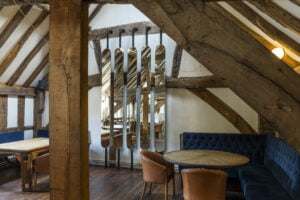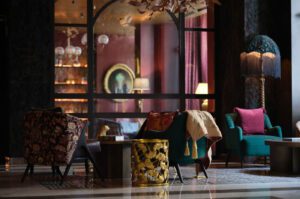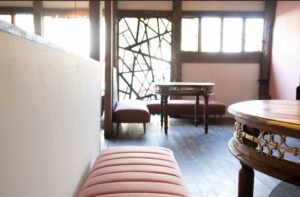Have you ever wondered why your favourite fast food joint doesn’t invite you to linger too long, while a fine dining restaurant encourages you to get comfortable? It’s not only about matching expectations; there are also clear psychological tricks at play to help encourage the kind of behaviour these different styles of establishment are looking for in their customers.
The original McDonalds dining concept featured functional booths in bright shades of red and yellow. Red was chosen to help stimulate appetite, while yellow is a bright beacon that calls out to younger diners. The utilitarian concept reminds you that it was clean when you arrived, so why not clear your table on the way out?
Contrast this with an establishment like Sketch in Mayfair. Plush seating in mellow yellow shades encourage diners to sink down and get comfortable. The longer they stay, the better, as they’ll be running up a larger and larger tab.
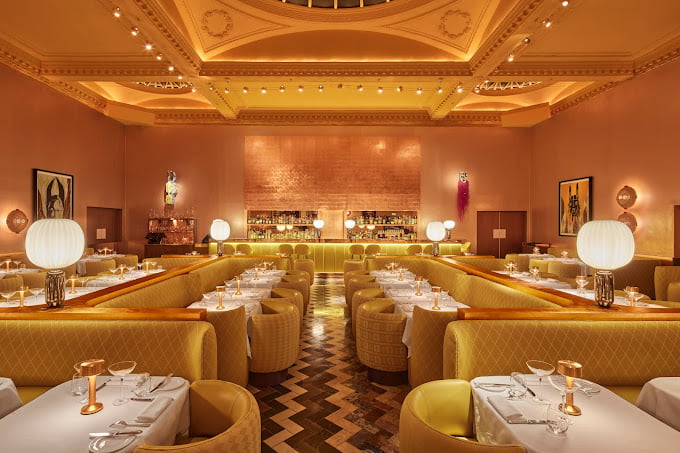

Image Source: Sketch, Mayfair
You’d be forgiven for thinking that restaurant design choices are purely aesthetic. While visual harmony and interest is clearly a priority, there is more going on behind the scenes. And this all depends on whether the restaurant wants you to eat and drink more, or clear your table quickly and make room for the next guests.
Here are just some of the ways that psychology influences dining design to help encourage positive behaviour.
Narrative
Every restaurant should have a narrative that runs through the design and the menu. When the decor is at odds with the F&B offering, diners are left feeling off-kilter. Thematically, there needs to be something that binds the decor with the menu.
Take Bacchanalia in London. Diners are surrounded by OTT frescos, marble statues float overhead and images of cherubs adorn the menu. This opulent setting sets the scene for the Mediterranean-inspired menu. It’s not about matching gastronomy to gimmicks, but rather about creating a narrative that makes diners feel like they are part of a story.
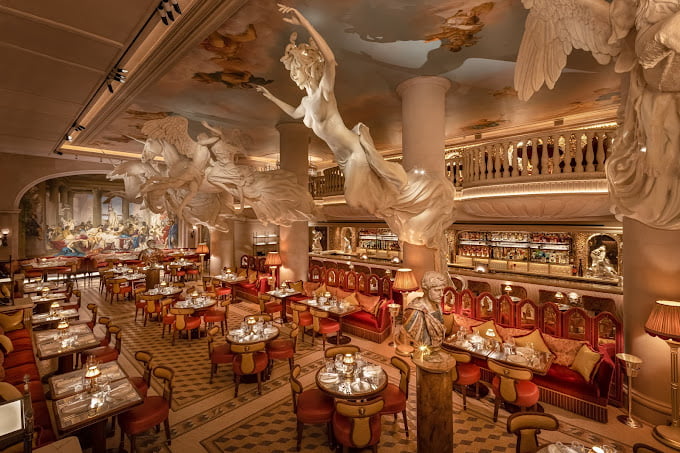

Image source: Bacchanalia
Texture
Texture plays a huge role in dining psychology. Rustic dining pairs well with soft, washed linen, while luxury dining calls for sumptuous fabrics. In Japanese restaurants, we have an expectation of clean lines and dark wood.
Ave Mario in Covent Garden achieves the balance of texture beautifully with their riotous blend of red, white and gold. Their plushy red velvet booths invite you to get close to your fellow diners for an intimate dining experience.
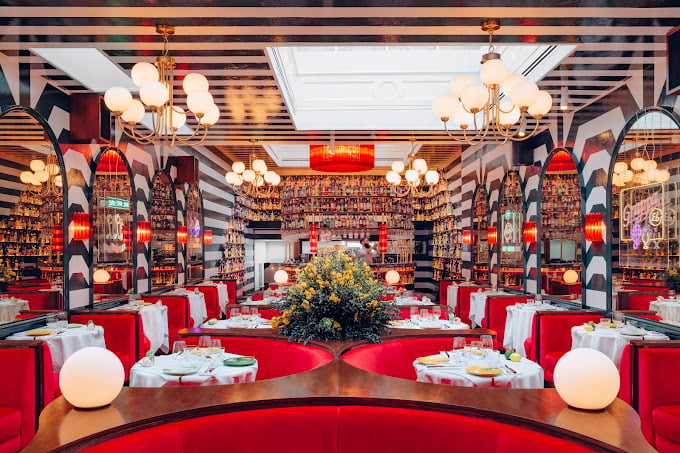

Image source: Ave Mario
Another great example of this would be The Green Dragon. In this space, we paired rich velvet fabrics in playful tones to create contrast with the exposed beams and original 15th Century architecture.
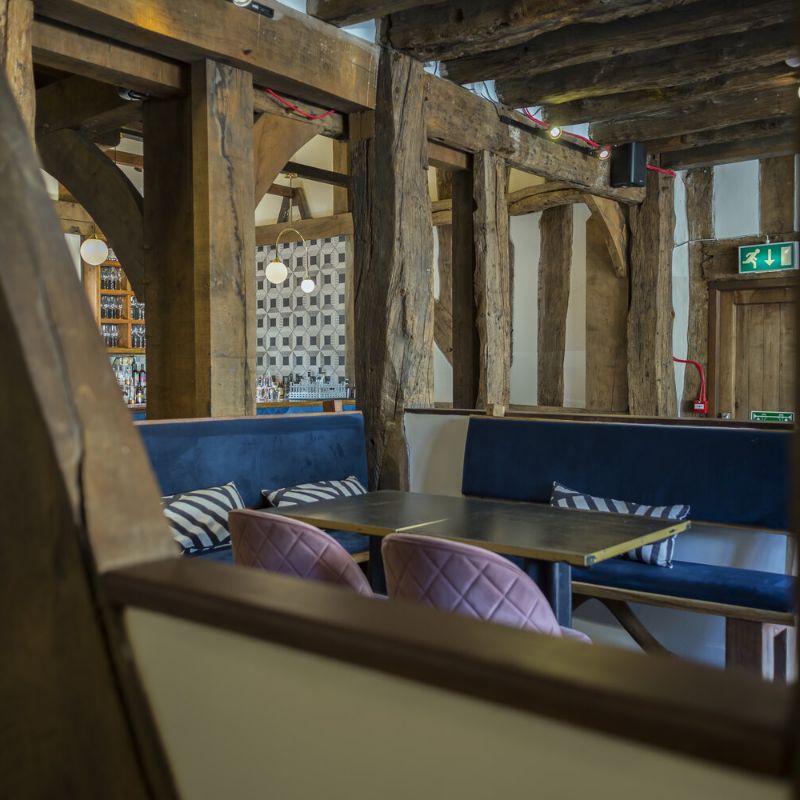

Comfort
It goes without saying that diners should be able to get comfortable if you want them to stick around for a while. We wrote about how interior design can help to increase dwell time in last month’s blog.
In fast-dining establishments, the aim is to make it possible for diners to perch or park only for as long as they need to enjoy their food before they vacate their table – making space for the next eager diners. In Dhillon’s Lounge, we created a wide range of seating options, including rustic benches, high bar stools and Chesterfield sofas.
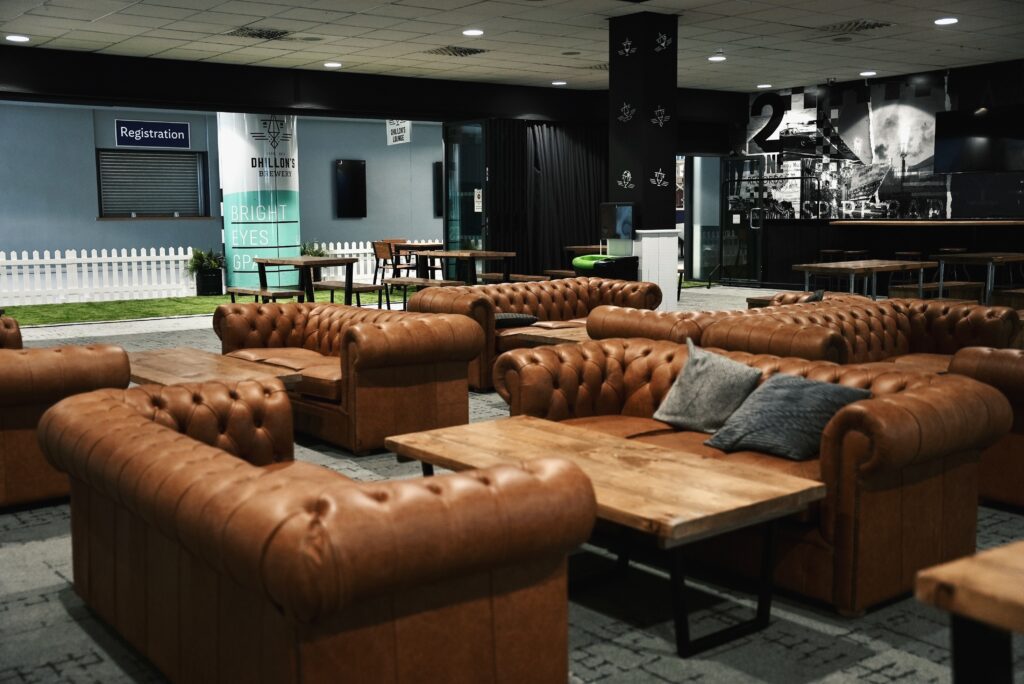

If you want to increase dwell time, it’s common to create cosy spaces and nooks where diners can feel comfortable and at ease. Take The Wilderness in Birmingham as an example. The moody interior promotes a sense of cosiness, like the diner is cloaked in a cloud of secrecy.
Lighting
Many interior designers will start with the lighting. How we light a space influences how we see colour, texture and contrast. Above all else, diners want to feel confident in the way they look while they are enjoying their dining experience. Flattering lighting should be a priority as this will encourage diners to stick around for longer.
In fast-dining establishments, lighting might be used in a more playful way. It could even become a marketing ploy. Take iconic burger brand Archies and their playful pink branding. In their latest Manchester venture, they installed an on-brand pink train carriage which quickly became a hit on social media. Pink lighting is neither flattering nor appetising, but this doesn’t seem to deter the hoards of diners who flock through the doors to get their hands on the latest Archies creations – and then share the experience on Instagram.
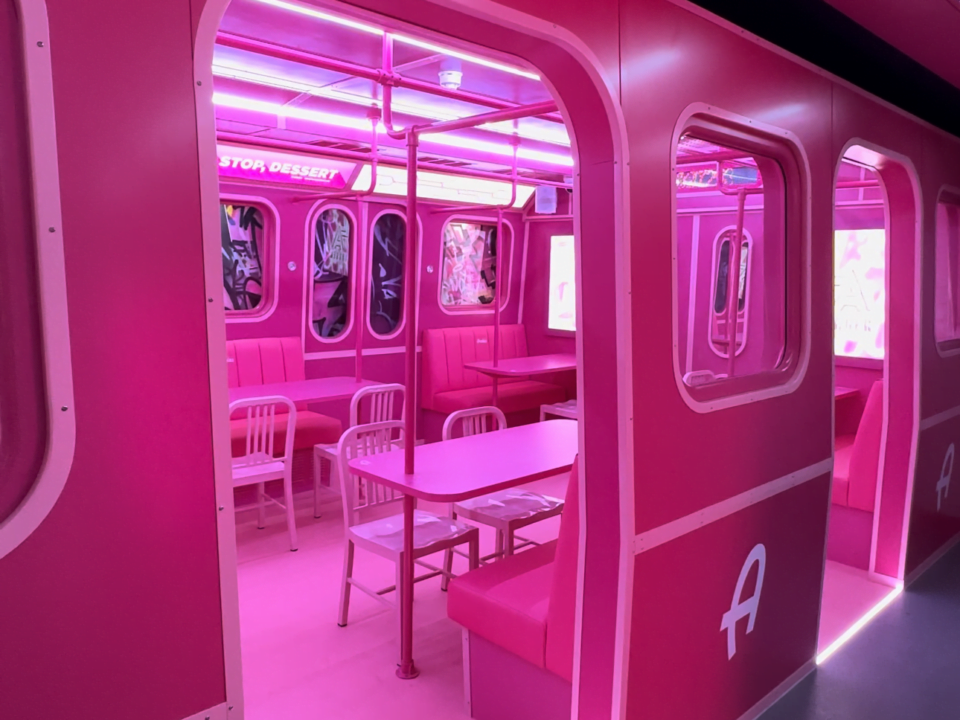

Image source: Archies
Functionality
One final consideration for creating the perfect dining space is functionality. The most beautiful space in the world won’t encourage diners to stay a while if the wait staff are always colliding or asking to squeeze past their table.
While aesthetics are important, functionality also matters to the diner, even if they aren’t aware of how this impacts them. When designing the layout of a restaurant, it’s important to make sure every table feels like the best table in the house. If diners are left feeling like they have drawn the short straw in their allocation of seats, this can colour their entire dining experience.
Final thoughts
If you’re planning a new restaurant and need guidance, Black Ivy Design is here to help. We create iconic dining spaces that are visually stunning and commercially successful. Get in touch today to learn more about our restaurant interior design service. We can help you to apply the psychological tricks outlined above to help create a functional and profitable restaurant that gets people talking.
